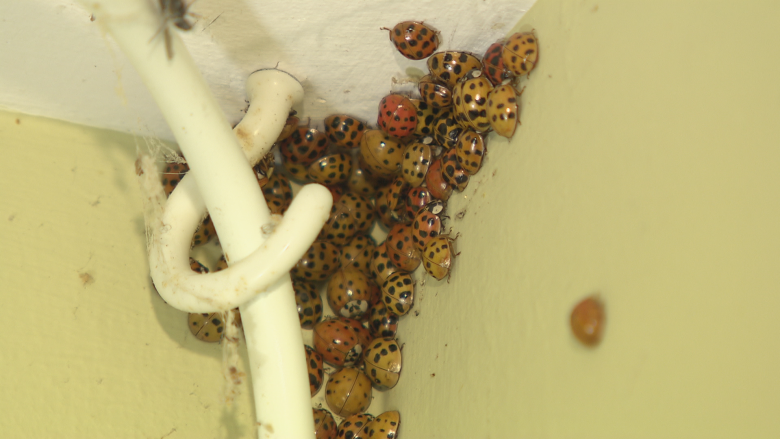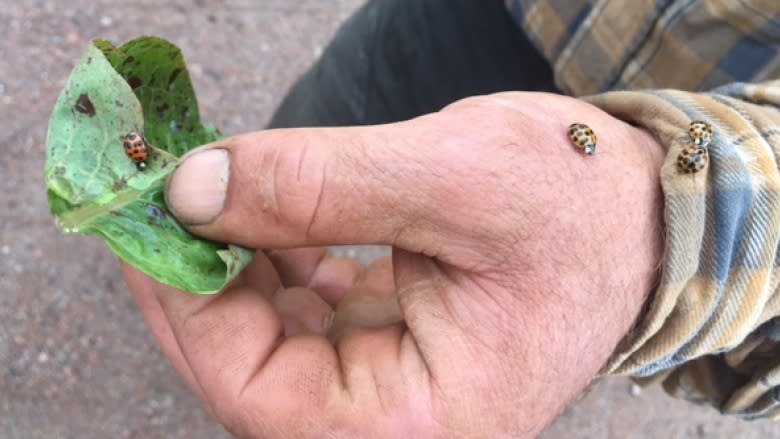The biting, stinking Asian ladybeetle invades homes across the province
Non-native multi-coloured Asian ladybeetles are invading homes across the province looking for a place to spend the winter.
The insect is not native to Canada, but established itself in New Brunswick in abundant numbers about 10 years ago.
Francine Hébert, is hoping she can vacuum them up before they take up permanent residency in her Cocagne, N.B., home. She stumbled across a swarm of ladybeetles on Sunday, in her living room.
"It was really exceptional. We usually see a few ladybugs around our house, but not like we saw yesterday."
She added that in past years, the lady beetles were outside her home, not in clumps like she found inside. Hebert said when she opened the door, the beetles would take advantage of the situation and follow her in.
"There were literally five or six hundred just around the door."
According to John Klymco, zoologist at Atlantic Canada Conservation Data Centre in Sackville, N.B., these beetles aren't the cute, docile ladybugs of years past. The multi-coloured Asian ladybeetle can bite, and secrete a foul smelling orange liquid, but are not dangerous.
Klymko said when handled, the beetles fold their limbs and do something called "reflex bleeding" which involves exuding a substance from the leg joints containing chemical compounds that are, "very distasteful."
"Predators of ladybeetles, when they eat the beetle, they would get that in their mouth and presumably spit the beetle out and then remember, 'don't eat bright coloured beetles that have black spots'."
He said because the bugs aren't at risk from predators, they swarm out in the open in the fall.
"This time of year lady bugs are looking for spots to overwinter and on really warm days they might be emerging from those over wintering spots."
"You'll see them on south facing walls on sunny days."
Overwintering time
Kylmko isn't sure whether it's temperature, or the length of the day, but some sort of cue tells the species, "now is the time to start overwintering."
"And when you get exceptionally warm days late in the year, you might see exceptionally high numbers of these lady beetles as they are moving in and around their overwintering site."
The Asian ladybeetle is non-native to Canada, and was introduced to North America to help control aphid populations.
"In a matter of a decade its populations just exploded and it spread very quickly."
Farms in the area are seeing the same kind of influx, but organic farmer Kent Coates doesn't mind.
"For us ladybugs are a good thing, they eat aphids."
Heidi Savoie, who works on Coates' farm said during her job of washing lettuce she is seeing, "lots and lots of lady bugs."
"I don't remember ever seeing them in these numbers."
But Savoie doesn't get a break when she heads home at night.
"I actually have some in my house as well."
But according to Klymko, Asian ladybeetle activity should slow down soon, and people with unwanted insect house guests will get a break until, "temperatures warm up again in the spring and they are looking to get out."










